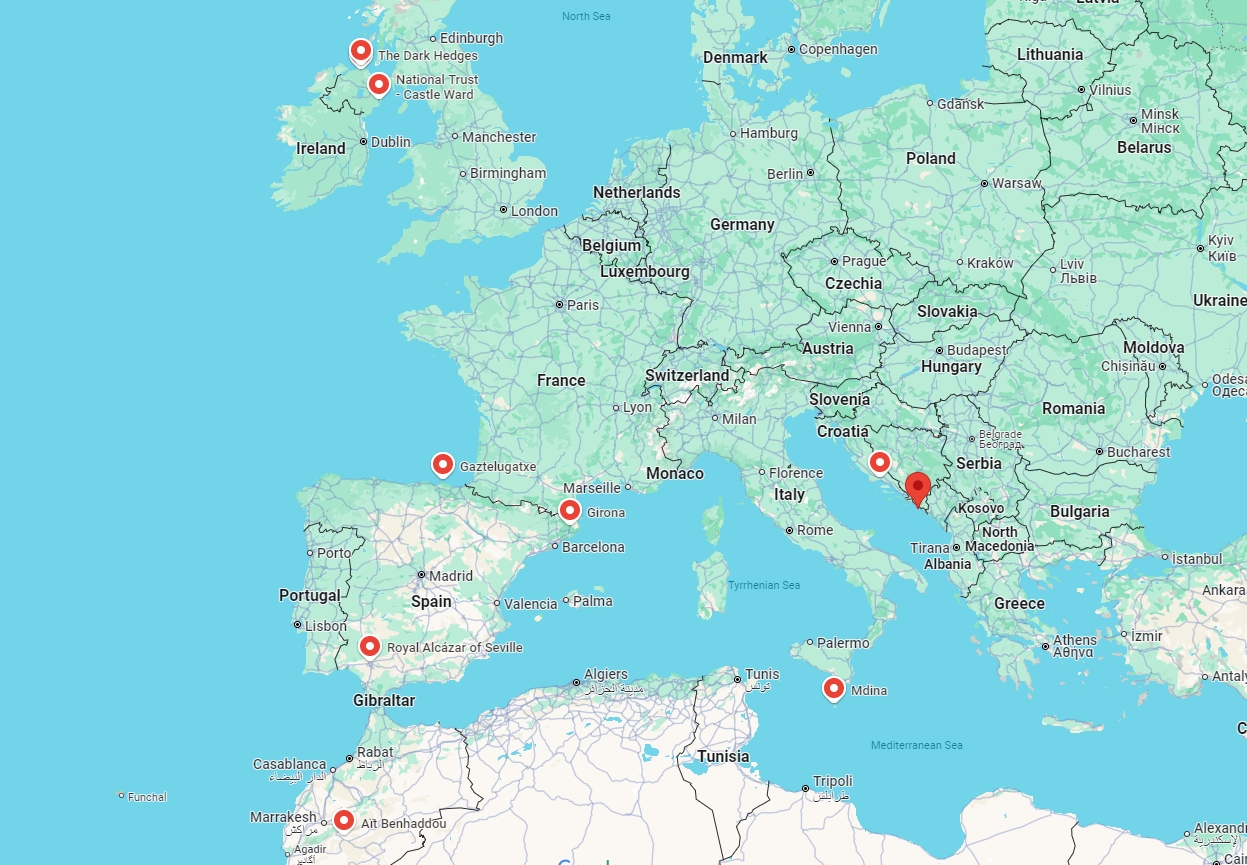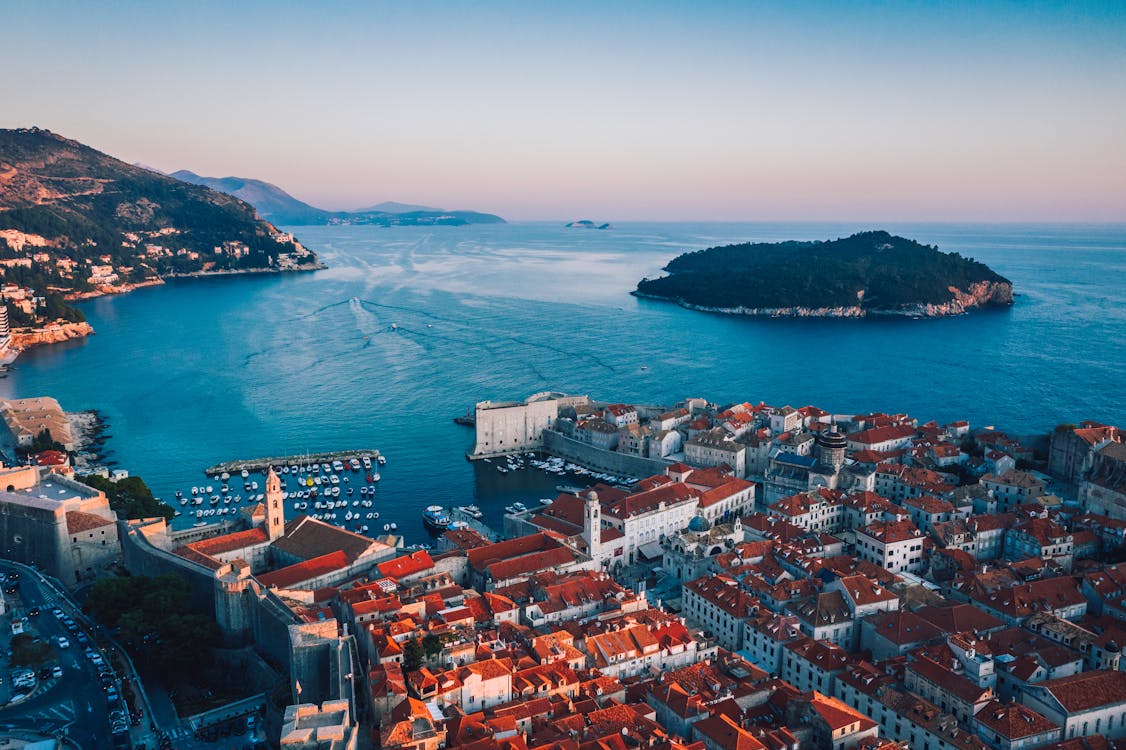Game of Thrones, one of the most iconic TV series in recent years, brought George R.R. Martin’s complex world of Westeros to life with its stunning landscapes and intricate set designs. The show, which aired from 2011 to 2019, spanned multiple seasons and took viewers through jaw-dropping scenery that played a vital role in creating the dark, medieval fantasy.
From the towering cliffs of Northern Ireland to the medieval streets of Croatia, the filming locations became just as much a character in the series as the people who inhabited them. Fans of the show often feel a deep connection to these places, and many have made it a point to visit the real-world sites that shaped their favorite scenes.
With the renewed interest in the world of Game of Thrones, fueled by the release of prequels and spin-offs, these destinations remain as popular as ever. Whether you’re a hardcore fan eager to step into the real King’s Landing or someone simply looking for breathtaking travel experience, this guide will take you to some of the most famous filming locations for Game of Thrones in Europe and beyond!

1. Dubrovnik, Croatia: King’s Landing
Dubrovnik, Croatia, became synonymous with King’s Landing, the capital of the Seven Kingdoms, during much of the show’s run. The medieval walled city, with its narrow streets and historical architecture, perfectly matched the vision of George R.R. Martin’s bustling metropolis. In the series, Dubrovnik is first seen in the second season, marking its presence as the core of political intrigue and power struggles. The Red Keep, the city’s harbor, and the winding streets played host to several significant events, from royal processions to the infamous Walk of Atonement.

What makes Dubrovnik such a unique filming location is its preservation of historical landmarks, providing a rich backdrop for the political drama in the series. Walking through Dubrovnik, visitors can relive moments from the show while also appreciating the city’s genuine beauty.
Tours4fun recommendation:
2. Split, Croatia: Meereen
Across the Narrow Sea, in the eastern part of the continent of Essos, lies the once great slavery city of Meereen, where Daenerys Targaryen liberated her enslaved people. The city’s Diocletian’s Palace, an ancient Roman complex, was transformed into the throne room where Daenerys rules over her growing empire. The basement of the palace also hosted the unsullied soldiers and several pivotal scenes of political tension and rebellion in the city.

Split is a fascinating destination for any visitor, blending ancient history with vibrant modern life. For fans of the series, exploring the grand halls of Diocletian’s Palace offers an immersive experience, bringing to mind scenes of dragons, political intrigue, and Daenerys’ rise to power.
Tours4fun recommendation:
3. Girona, Spain: Braavos and King’s Landing
Girona, a medieval city in Catalonia, Spain, doubled as both Braavos and parts of King’s Landing in Game of Thrones. In Braavos, Arya Stark’s storyline played out as she trained to become “no one” at the House of Black and White. The narrow, maze-like streets of Girona were perfect for Arya’s adventures, including her famous chase scene through the city as she escapes the Waif.

Girona’s gothic architecture and cobblestone streets fit seamlessly into the world of Westeros. Visitors to the city can walk through the same winding paths as Arya, discovering locations such as the Cathedral of Girona, which also stood in for King’s Landing in season six. Beyond its cinematic appeal, Girona is a beautiful destination filled with history, art, and culture.
Tours4fun recommendation:
4. Castle Ward, Northern Ireland: Winterfell
For fans of House Stark, no pilgrimage to Game of Thrones filming locations is complete without a visit to Winterfell. The home of the Starks, located in the North of Westeros, was filmed at Castle Ward in Northern Ireland. The 18th-century castle and its surrounding lands provided the perfect setting for Winterfell’s ancient stronghold. In the series, Castle Ward appears in the very first episode, setting the stage for the Starks’ tumultuous journey through the show.
Castle Ward offers a range of activities for Game of Thrones fans, including archery lessons and tours of the locations where pivotal scenes were shot. The nearby Audley’s Castle, which also appears in the series, provides further immersion into the world of Westeros. For visitors, the sprawling grounds and historical buildings offer not just a connection to the show but also an exploration of Northern Ireland’s rich history.
5. Gaztelugatxe, Spain: Dragonstone
Dragonstone, the ancestral home of House Targaryen, plays a central role in the later seasons of Game of Thrones, especially when Daenerys Targaryen returns to reclaim her birthplace. The dramatic island fortress of Dragonstone was brought to life through the real-life location of Gaztelugatxe, a small islet off the coast of Spain’s Basque Country. Connected to the mainland by a narrow bridge, Gaztelugatxe’s winding stone staircase and isolated chapel provided the perfect setting for the imposing Dragonstone castle.

Fans of the series will recognize the winding staircase leading up to Dragonstone’s gates, which Daenerys and Jon Snow traverse in several episodes. Gaztelugatxe, with its breathtaking coastal views and rugged cliffs, is a popular hiking destination, and the journey to the top is rewarded with panoramic views of the Atlantic Ocean. The location’s dramatic beauty and cinematic history make it a must-visit for any Game of Thrones fan.
6. Ballintoy, Northern Ireland: The Iron Islands
The rugged coastline of Northern Ireland served as the ideal backdrop for the Iron Islands, home to the Greyjoy family. Ballintoy, located on the northern coast of County Antrim, was used to represent the harsh and windswept islands where the ironborn rule the seas. In the series, we first encounter the Iron Islands in season two, and the jagged cliffs and turbulent waters of Ballintoy give the perfect sense of isolation and danger.

Though the Iron Islands in the series are often depicted as cold and unforgiving, Ballintoy itself is a serene and beautiful coastal village, offering visitors stunning ocean views and a peaceful atmosphere. The harbor, where Theon Greyjoy returns after years away, is a popular spot for fans. For those wanting to explore the surrounding area, the nearby Giant’s Causeway and Carrick-a-Rede Rope Bridge offer equally breathtaking scenery.
7. Þingvellir National Park, Iceland: Beyond the Wall
When Jon Snow ventures beyond the Wall to face the threats from the Night King and the White Walkers, the icy and desolate landscapes are portrayed through the dramatic scenery of Þingvellir National Park in Iceland. Known for its rugged beauty, this UNESCO World Heritage Site served as the backdrop for several scenes in the North, most notably when the Night’s Watch goes beyond the Wall to scout the wilderness.

Þingvellir’s otherworldly landscape, with its volcanic rifts and expansive vistas, brings the harsh and unforgiving world of the North to life. Visitors to the park can explore its many trails, which lead through some of the most stunning natural wonders in Iceland, including waterfalls and tectonic plate boundaries. While the series used the park to convey the brutal conditions beyond the Wall, Þingvellir offers a serene and awe-inspiring experience for travelers.
8. Alcázar of Seville, Spain: Dorne’s Water Gardens
For the sun-drenched kingdom of Dorne, the creators of Game of Thrones turned to southern Spain, specifically the Alcázar of Seville. This stunning palace served as the Water Gardens, the residence of House Martell. Introduced in the fifth season, the Water Gardens are shown as an opulent and peaceful retreat, standing in stark contrast to the cold and war-torn lands in the North.

The Alcázar, a UNESCO World Heritage Site, boasts intricate Islamic architecture, lush gardens, and tranquil pools, making it an ideal location for Dorne’s exotic and luxurious setting. While Dorne’s storyline in the series might have been short-lived, the beauty of Seville continues to captivate visitors. Walking through the palace grounds, one can easily imagine the political schemes and family drama that unfolded there. The Alcázar is not only a must-see for Game of Thrones fans but also for anyone who appreciates history and architecture.
Tours4fun recommendation:
9. Aït Benhaddou, Morocco: Yunkai and Pentos
For the desert cities of Essos, the Game of Thrones production team traveled to Morocco, with Aït Benhaddou standing in for both Yunkai and Pentos. Aït Benhaddou, a UNESCO World Heritage Site, is an ancient fortified village made of clay, known for its stunning desert backdrop and centuries-old architecture. In the show, this location represents the slaver cities of Yunkai, where Daenerys Targaryen frees thousands of slaves in her campaign to end slavery in Essos.

Fans of the series will recognize the distinct reddish-brown walls and the iconic kasbah that dominate the skyline of Aït Benhaddou. While it’s featured prominently in Daenerys’ storyline, the village itself is a popular destination for travelers drawn to its history and beauty, offering a chance to explore its winding paths and towering fortifications.
10. Dark Hedges, Northern Ireland: The Kingsroad
One of the most visually stunning locations in Northern Ireland is the Dark Hedges, a natural avenue of beech trees that forms an atmospheric tunnel. This eerie yet enchanting location was used to depict the Kingsroad, the primary highway that connects the northern and southern parts of Westeros. The Dark Hedges appear early in the series when Arya Stark, disguised as a boy, escapes King’s Landing and heads north to Winterfell.

While the Dark Hedges look otherworldly in the series, the location is equally mesmerizing in person. The intertwining branches create a tunnel-like effect, making it a popular spot for both photographers and Game of Thrones enthusiasts. Although the site can be crowded due to its fame from the show, visiting early in the morning or during the off-season allows for a quieter, more magical experience.
*Mdina, Malta: King’s Landing (Season 1)
The medieval city of Mdina in Malta was the original King’s Landing in the first season of Game of Thrones. This fortified city served as the setting for many scenes in the early episodes, including Catelyn Stark’s arrival in King’s Landing and the confrontation between Jaime Lannister and Eddard Stark. Mdina’s quiet, ancient streets, golden stone walls, and historic atmosphere made it the perfect backdrop for the political drama that unfolded within the city.

While production later moved to Dubrovnik for King’s Landing scenes, Mdina remains an important part of the show’s history. A visit to Mdina offers a chance to walk through its winding alleys and imagine the early days of the Starks and Lannisters. The city itself is also a treasure trove of Maltese history, providing a glimpse into the past.
Frequent Asked Questions
Where are the main filming locations for Game of Thrones?
The primary Game of Thrones filming locations span across multiple countries. Key sites include Dubrovnik, Croatia (King’s Landing), Northern Ireland (Winterfell and the Iron Islands), Iceland (Beyond the Wall), and Spain (Dorne and Dragonstone). Malta and Morocco were also used for earlier seasons. These locations brought Westeros to life, offering dramatic landscapes and historical backdrops for the show’s epic scenes.
Can you visit Game of Thrones filming locations?
Yes, many Game of Thrones filming locations are open to the public, and some offer guided tours. Dubrovnik, Northern Ireland, and Iceland have become particularly popular destinations for fans. In Dubrovnik, you can explore King’s Landing, while in Northern Ireland, you can visit Castle Ward, the real-world location of Winterfell. Several tour operators now offer themed trips based on the show.
Was Game of Thrones filmed in real castles?
Yes, many real castles and fortresses were used during the production of Game of Thrones. Alcázar of Seville in Spain was transformed into the Water Gardens of Dorne, and Doune Castle in Scotland was used for Winterfell in the pilot episode. The natural landscapes and architecture of these historic locations added a layer of authenticity to the show.












There are no comments.